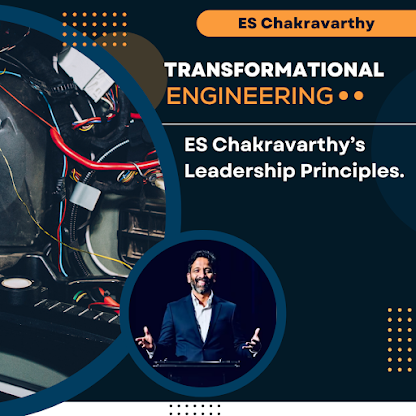The Future of Engineering Careers: ES Chakravarthy's Take on Automation and AI
As technology moves faster and faster, the engineering face is also changing at a high rate. Automation and AI are not the technologies of the future; they are indeed technologies today. Well-known industry expert ES Chakravarthy has given a compelling outline of what the technologies will mean to engineering careers and the new opportunities they will create for innovation and growth.
The Growing Influence of Automation and AI
Automation and AI will eventually cover each of the world's industries from manufacturing to healthcare, from transportation to finance. They will have optimized processes and lead to enhanced productivity, eliminating human errors from the processes. For engineers, this is indeed going to change their perspectives on the need to change and adopt a mindset of lifelong learning.
ES Chakravarthy himself states that automation is not there to replace the engineers but to make them concentrate on more complicated and creative work. Work complemented by human creativity is that which would be relegated to AI as involving repetitive or data-intensive jobs, thus freeing more time to innovate.
New Skill for the Future Engineer
Chakravarthy stresses building skills that may be suited to the new world order driven by technology. Engineers must go beyond traditional disciplines and develop expertise in areas like:
Programming and AI Algorithms: To design an AI-driven solution it is essential to
Data Analytics: Statistical knowledge empowers engineers to make useful decisions
IoT Integration: Engineers need to understand how devices interact in a connected
Cybersecurity: The focus now is to secure data from frontiers that are increasingly
Besides Software competency, Chakravarthy reiterates personal competency which refers to skills of flexibility, problem-solving, and interpersonal communication. Engineers possessing a combination of technical expertise and emotional intelligence are more likely to survive in a collaborative multidisciplinary environment.
Opportunities in Emerging Fields
According to ES Chakravarthy, the integration of automation and AI is creating opportunities in areas such as:
Smart Manufacturing: Robotic technologies as well as IoT continue to change the ways
Sustainable Energy Solutions: Sustainability concepts are important for renewable
Healthcare Innovations: Auto mechanics are developing devices and systems that
Autonomous Transportation: Both self-driving automobiles and drones are reliant
AI Ethics and Governance: The Engineer’s Role in the Ethical Use of AI Also, as the
practices.
Redefining Engineering Education
Chakravarthy proposes changing the outlook of students and educators in engineering careers in order to accommodate more AI and automation education. He recommends that universities and training programs should focus on skills practice and development, workplace attachments, and training.
Additionally, engineers can only reduce the risk of becoming obsolete by signing up for online courses and digital workshops and taking certifications relevant to the current technologies.
Preparing for the Transition
As several industries look forward to a rosy future, ES Chakravarthy explains that engineers of the future may encounter some hurdles as they steer industries toward the age of Artificial Intelligence. He advises young professionals to:
Stay Curious: To enhance the technology knowledge and application, continue to look
Build Networks: Interact with people who may help you in your work, or give you
Be Resilient: Always use failures to your advantage and learn from them, also be
Conclusion
The futures of engineering careers require a combination of both automation-AI and human-animated creativity. It is only possible under the leadership of visionaries like ES Chakravarthy that engineers can confidently steer through this change process. Thus, by learning the right skills and the right attitude, they not only cope with the changes but help shape the technologies that will be the future.
Chakravarthy has said this many times, “Engineering is not simply about codifying the present challenges but envisioning the future ones’. Looking at the domain of automation and the use of AI the opportunities are unlimited and the future of engineers has never looked so bright.
.png)

.png)

Comments
Post a Comment